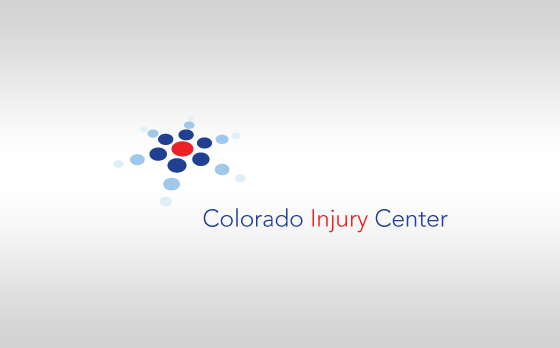“Your client has a disc bulge in their neck and some arthritis, so their neck symptoms are not related to the crash. There is a low back herniation but lots of people have those and don’t have pain. It is our opinion it was there before the crash.” This statement from an adjuster is an argument that has been made for years allowing insurance companies to inappropriately reduce settlements to their clients based on the client’s inability to prove when or how their injury really occurred. To factually counter this type of statement, one must use imaging and age dating, with an understanding of biomechanics in order to demonstrably discuss causality. Without medical experts utilizing the current medical and academic research available, it will continue to be difficult for any argument to be made explaining the nature of and long-term effects of these injuries based on scientific fact vs. rhetoric.
Imaging of the spine is critically important in all cases of injured clients. In traumatic cases, imaging is necessary for diagnosis, triage and proper co-management of bodily injuries. Imaging needs to be performed as per the current academic and contemporary medical/chiropractic standard to ensure an accurate diagnosis. The most common injuries in car accidents are spinal related, and the basic imaging available includes x-rays, CAT scans and magnetic resonance imaging (MRI), allowing medical providers to make an accurate diagnosis, when clinically indicated.
Every medical provider in Colorado (MD, DO, DC for diagnosis/prognosis purposes) has a license to see and treat car related injuries. However a “license” is not the same as “specialization.” By way of illustration, although psychiatrists are MDs and might have a license to do heart surgery, it would not be in the best interest of the patient. Nor would I go to a spine surgeon for psychological concerns even though they are fully licensed to treat medical conditions. In spinal trauma, certain providers specialize in connective tissue injuries of the spine, allowing us to go one step further in diagnosis, prognosis and management, including “age-dating” these commonly found disc and ligament injuries.
To understand age-dating, one needs to have a basic medical understanding of anatomy and physiology, as well as what tissue is commonly injured and the probable “pain generator”. Since neck injuries are the most common injuries seen in car crashes, cervical spinal joints will be our focus. Related to anatomy, every set of two vertebrae in the neck is connected with three joints; one disc and two facet joints. These joints allow for normal movement of the spine (mobility). Additionally, there are multiple ligaments that hold these joints together and are responsible for stability. The proper balance of mobility and stability is critical when looking at the biomechanical part of patient’s injuries, meaning that too much or too little movement in spinal joints can cause pain, secondary to damaged tissue. The tissue most commonly injured in a car crash is muscle/tendon, ligament, disc, facet and nerve. Spinal cord and bone injuries also occur although less frequently. To determine causality, the provider should comment on what tissue is injured, and also use imaging to help determine when this injury occurred (age-dating).
There are two basic problems that must be addressed. Fardon and Milette (2001) reported, “The term ‘herniated disc’ does not infer knowledge of cause, relation to injury or activity, concordance with symptoms, or need for treatment” (p. E108). Simply having the presence of a disc herniation, without a physical exam or without proper symptom documentation, does not allow one to comment on the cause of the injury. In a rear impact collision for example, even when the diagnosis is confirmed, additional criteria need to be met to answer the question of “Was there enough force generated into the vehicle and the occupant to cause the cervical/lumbar herniation?” Fardon, in a follow-up study (2014) reported that disc injury “in the absence of significant imaging evidence of associated violent injury, should be classified as degeneration rather than trauma.” (p. 2531). So, we must more objectively define the subjective connotations of “violent injury” and address the issue of “degeneration rather than trauma”. Although this statement can often be misleading, it gives the trauma trained expert doctor a basis
in going forward understanding that every patient’s physiology is unique and not subject to rhetoric, but clinical findings.
Violent injury to the occupant can occur when there are sudden acceleration and deceleration forces (g’s) generated to the head and neck that overwhelm connective tissue or bring them past their physiological limit. To determine the acceleration force, ΔV (delta V) is used. ΔV is the change in velocity of the occupant vehicle when it is hit from behind (i.e., going from a stopped position to seven miles per hour in 0.5 seconds due to forces transferred from the “bullet” vehicle to the “target” vehicle). Using these data, research allows us to make specific comments related to violent injury. For the purpose of this article, we are oversimplifying because the cervical spine is exposed to compression, tension, and shearing forces. In addition to g-forces, the elastic nature of most rear impact crashes makes it nearly impossible to find a true minimum threshold for injury although the literature has given us many examples of low-speed crashes that are dependent not simply on speed, but the mass (weight) of the subject vehicles. Each person’s susceptibility to injury is unique. While g-forces alone are insufficient to predict injury, Krafft et al. (2002) reported that in low-speed collisions there is an injury threshold of 4.2 g’s for males and 3.6 g’s for females. Krafft’s research is unique in that she has access to insurance data inaccessible to most researchers. Panjabi (2004) showed that forces as low as 3.5g impacts would cause damage to the front of the disc, and 6.5g and 8g impacts would cause disc damage posteriorly where the neurological elements are.
A spinal biomechanical expert can then look for conclusive evidence by age-dating disc and joint pathology, based on two phenomena. First, it is well known that the body is electric. When an EMG is performed we are measuring electrical activity along nerves to diagnose radiculopathy, which is nerve damage. Second, there are also normal bioelectrical fields in all tissue, known as piezoelectricity. When an injury occurs, this normal electrical field is disrupted, and in the case of spinal joints calcium is drawn into the damaged tissue creating bone spurs. Issacson and Bloebaum (2010) reported “The specific loading pattern of bone has been documented as an important piezoelectric parameter since potential differences in bone have been known to be caused by charge displacement during the deformation period” (p. 1271). Fortunately for the patient, we are able to tell how much of this process has occurred either before or after their crash, specifically when we take into account the soft tissue damage seen and evidence of bone/calcium deposition.
Additionally, the body begins a healing process that includes regeneration and remodeling of both soft and hard tissue as reported by Issacson and Bloebaum (2010). Spinal vertebrae have a unique structure that allows it to adapt to abnormal mobility and stability (injury) by changing shape, which can be seen on radiographs or MRI. Furthermore, the bone will change shape according to predictable patterns based on the increased pressure or load that it undergoes post-injury. Issacson and Bloebaum stated that “Physical forces exerted on a bone alter bone architecture and is a well-established principle…” (p. 1271). This is a further understanding of a scientific principle known as Wolff’s law, first established in the 1800’s. Since we know what “normal” is, when we see “abnormal” findings due to mechanical stress we can broach the topic of an acute injury versus a degenerative process being the cause of the abnormality and make specific medical predictions accordingly.
He and Xinghua (2006) studied the predictability of this bone remodeling process and were able to make predictions of pathological changes that will occur in bone, specifically the osteophyte (bone spur) on the edge of a bone structure. Significantly, they noted their findings “confirmed that osteophyte formation was an adaptive process in response to the change of mechanical environment”. They noted that mechanical factors are crucial to the morphology of bones, notably load-bearing bones such as the femur and vertebrae.
For readers familiar with current medical and academic accepted nomenclature for disc damage, recognized by the combined task forces of the North American Spine Society (NASS), the American Society of Spine Radiology (ASSR) and the American Society of Neuroradiology (ASNR), disc herniations must have a directional component. When this occurs, the abnormal and additional pressure at the level of the disc damage matched with the direction of the herniation will cause only that part of the vertebrae to remodel.
Thus, if there is a C5/6 right sided herniation (protrusion/extrusion) secondary to a cervical acceleration/deceleration injury, then only that side of the vertebrae will change shape, creating an osteophyte. This compounded loading on the facet joint additionally causes facet arthritis. This process is similar to the formation of a callous on your hand or foot. The callous is a known and expected tissue response to increased load/friction exposure. Similarly, an osteophyte is a known and expected bone response to an increase in load/friction exposure.
At a basic level, the body has an electrical and mechanical response to injury resulting in additional stress that causes calcium (bone) to flow into the area of injury to further support the joint. The joint then abnormally grows, creating a pathology called hypertrophy, degeneration, disc osteophyte complex, or arthritis/arthropathy, common terms that lawyers seen in radiology and doctor’s reports.
Everyone is subject to these morphological (structural) changes, always and predictably dependent on mechanical imbalances in the spine. He and Xinghua (2006) concluded that, “…it will actually take about more than half a year to observe the bone morphological changes…” (p. 101). This indicates that it takes approximately six months for an osteophyte (bone spur) to be demonstrable post-mechanical failure or imbalance. This again provides a time frame to better understand if pathology of the intervertebral disc has been present for a long period of time (pre-existing) or has been produced as the direct result of the specific traumatic event by lack of the existence of an osteophyte, meaning the disc pathology is less than six months old, dependent on location and direction of the pathology.
In conclusion, by definition a disc is a ligament connecting a bone to a bone and it has the structural responsibility to the vertebrae above and below to keep the spinal system in equilibrium. Damage to the disc due to a tear (herniation or annular fissure) or a bulge will create abnormal load-bearing forces at the injury site. These present differently depending on [1] if traumatic, as biomechanical failure on the side of the disc lesion, or [2] if age related, as a general complex. Since other research and human subject crash testing have defined the term “violent trauma” as not being dependent upon the amount of damage done to the vehicle but rather to the forces to which the head and neck are exposed, we can now accurately predict in a demonstrable manner the timing of causality of the disc lesion. This is based upon the symptomatology of the patient and/or the morphology of the vertebral structure and is a subject that can no longer be based upon mere rhetoric or speculation.
References:
- Fardon, D. F., & Milette, P. C. (2001). Nomenclature and classification of lumbar disc pathology: Recommendations of the combined task forces of the North American Spine Society, American Society of Spine Radiology, and American Society of Neuroradiology. Spine, 26(5), E93–E113.
- Fardon, D. F., Williams, A. L., Dohring, E. J., Murtagh, F. R., Rothman, S. L. G., & Sze, G. K. (2014). Lumbar Disc Nomenclature: Version 2.0: Recommendations of the combined task forces of the North American Spine Society, American Society of Spine Radiology, and American Society of Neuroradiology. Spine, 14(11), 2525-2545.
- Krafft, M., Kullgren, A., Malm, S., and Ydenius, A. (2002). Influence of crash severity on various whiplash injury symptoms: A study based on real life rear end crashes with recorded crash pulses. In Proc. 19th Int. Techn. Conf. on ESV, Paper No. 05-0363, 1-7
- Batterman, S.D., Batterman, S.C. (2002). Delta-V, Spinal Trauma, and the Myth of the Minimal Damage Accident. Journal of Whiplash & Related Disorders, 1:1, 41-64.
- Panjabi, M.M. et al. (2004). Injury Mechanisms of the Cervical Intervertebral Disc During Simulated Whiplash. Spine 29 (11): 1217-25.
- Issacson, B. M., & Bloebaum, R. D. (2010). Bone electricity: What have we learned in the past 160 years? Journal of Biomedical Research, 95A(4), 1270-1279.
- Studin, M., Peyster R., Owens W., Sundby P. (2016) Age dating disc injury: Herniations and bulges, Causally Relating Traumatic Discs.
- Frost, H. M. (1994). Wolff’s Law and bone’s structural adaptations to mechanical usage: an overview for clinicians. The Angle Orthodontist, 64(3), 175-188.
- He, G., & Xinghua, Z. (2006). The numerical simulation of osteophyte formation on the edge of the vertebral body using quantitative bone remodeling theory. Joint Bone Spine 73(1), 95-101.



 Your stomach, intestines, liver, and kidneys all help to “process” (break down) whatever you eat or drink so that your body can use it. Even pain medications that you might get through a needle, or through your skin with a patch, are processed this way.
Your stomach, intestines, liver, and kidneys all help to “process” (break down) whatever you eat or drink so that your body can use it. Even pain medications that you might get through a needle, or through your skin with a patch, are processed this way.
 Opioids (oh-pee-oids) are also known as narcotics. They’re among the strongest and most effective pain relievers that your health care provider can prescribe. They are sometimes used to treat chronic pain (pain that lasts three months or more). Some examples of opioids
Opioids (oh-pee-oids) are also known as narcotics. They’re among the strongest and most effective pain relievers that your health care provider can prescribe. They are sometimes used to treat chronic pain (pain that lasts three months or more). Some examples of opioids
 If you’ve been in pain for a long time, your health care provider might want you to try an opioid medication to help treat it. Opioids are some of the strongest pain relievers that you can take, but some people are afraid that if they use this type of medicine, they might get addicted. Your health care provider can often help ease your mind.
If you’ve been in pain for a long time, your health care provider might want you to try an opioid medication to help treat it. Opioids are some of the strongest pain relievers that you can take, but some people are afraid that if they use this type of medicine, they might get addicted. Your health care provider can often help ease your mind.
